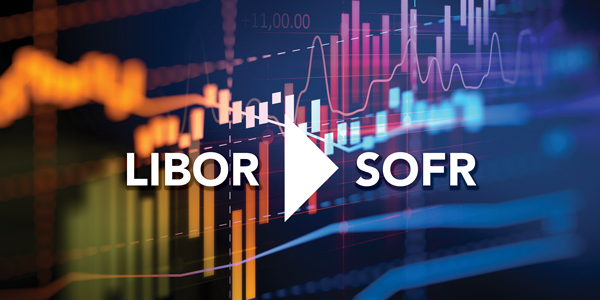On 30 September 2024, the remaining synthetic LIBOR settings were published for the last time and LIBOR came to an end. All 35 LIBOR settings have now permanently ceased. The transition away from LIBOR, once referenced in an estimated $400 trillion of financial contracts, has made financial markets safer, more stable and fit for modern use. UK regulators, their international counterparts and market participants have worked together over the past decade to move to risk-free rates (RFRs), based on robust data.
Synthetic LIBOR was a temporary bridge to give firms more time to move outstanding legacy LIBOR-linked contracts towards alternative RFRs, allowing for an orderly cessation.
A milestone to celebrate
The transition from LIBOR has been a complex international cross-industry effort spanning well over a decade. The successful transition away from LIBOR would not have been possible without the work and contribution of many people across the globe, including market participants, trade bodies, regulators and other authorities.
Andrew Bailey, Governor of the Bank of England, said:
‘When I spoke about the future of LIBOR in 2017, this day seemed a long way off. However, market participants have worked tirelessly to update old contracts and support a smooth and effective transition to alternative risk-free reference rates. It has been exciting to follow the immense progress markets have made and I would like to express my thanks to all those involved. The financial stability risks from LIBOR in the UK have been effectively mitigated and allowed for an orderly cessation. It has been a long road, but markets are now operating on more robust and resilient foundations.’
Nikhil Rathi, CEO of the FCA, said:
‘The end of LIBOR is the epitome of a quiet regulatory success, of huge and complex risks unwound diligently over time, including during periods of unprecedented market turbulence. The transition away from LIBOR is one of the most significant events in markets in this generation. It was a task that at times seemed Herculean. Achieving it required coordination between public bodies, across borders and with industry. It shows what can be done through collaboration and with a shared goal. I want to thank everyone who made it happen.’
The Working Group has met its objective
Now LIBOR has been phased out, the Working Group has met its objectiveLink is external. Following agreement from its members, it will be wound down effective today 1 October 2024.
The Bank and the FCA would like to thank all members of the Working Group, Sub-Group and Task Force members over the years for their valuable contributions in ensuring a successful transition away from LIBOR.
In particular, the Bank and FCA would like to thank the current chair, Sarah Boyce of The Association of Corporate Treasurers, and all former chairs for their support and guidance navigating the successful transition away from LIBOR.
Sarah Boyce, Chair of the Working Group on Sterling Risk-Free Reference Rates, said:
‘The Working Group has achieved its current objective of finalising the transition away from LIBOR, marking the end of its work. The successes of the Working Group would not have been possible without the efforts of its members and the effectiveness of the public-private partnership. I would like to thank all our members for helping us achieve an orderly transition from LIBOR to more robust reference rates.’
Looking ahead
Market participants are encouraged to continue to ensure they use the most robust rates for the relevant currency, such as SONIA for GBP and SOFR for USD. Market participants should ensure their use of term risk-free reference rates, such as term SONIA and term SOFR are limited and remain consistent with the relevant guidance on best practice on the scope of use.
With the transition away from LIBOR completed, the Bank, the FCA and Working Group remind market participants that credit sensitive rates (CSRs) should not emerge as successor rates, supported by the FPC’s viewLink is external that these rates are not robust or suitable for widespread use as a benchmark. In particular, the FCA and FPCLink is external have communicated to the market that USD CSRs have the potential to reintroduce many of the financial stability risks associated with LIBOR.



